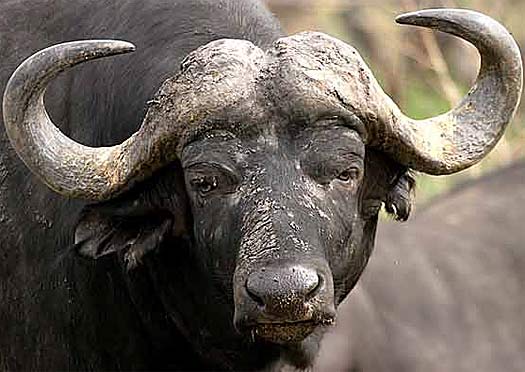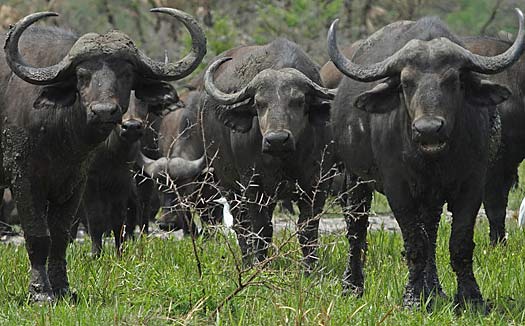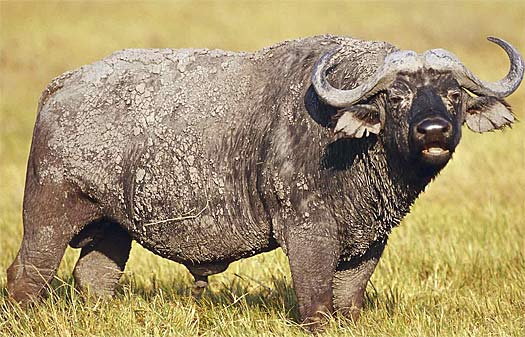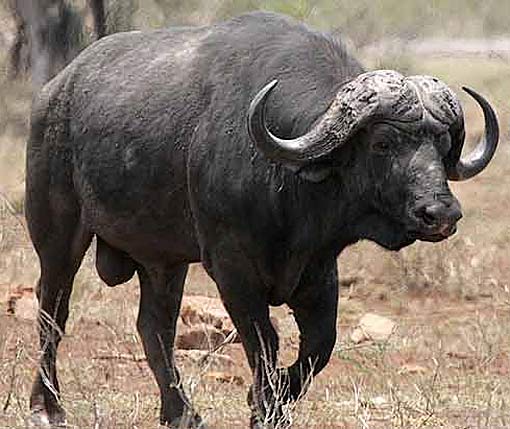African Buffalo – Large, Robust Beast

The African buffalo – sometimes called by the native names “affalo”, “nyati”, “mbogo” or Cape buffalo is a large plains dwelling mammal and a close cousin to the Asian water buffalo. Unlike the domesticated bovines (cows and bulls) in western countries, these large lumbering creatures are totally wild and dangerous.

The species, called Syncerus caffer is considered non-threatened by the IUCN, and is a populous and prolific species all over the plains of Africa. Their enormous curved horns are more alive than you think, and are in a constant state of growth and reduction due to weather, fighting and hormones. The horns are used in fights between males struggling for in-herd dominance.
Fact: these large African bovines are enormous, growing up to almost 6 feet (2 m) at the shoulder, and over 11 feet in length (3.4 m). The most amazing thing about the size of these animals of their weight, the Savannah dwelling buffaloes can grow up to 2,000 pounds! (910 kg). There are smaller, subspecies of African buffalo that dwell in forests, and tend to grow slightly smaller, as an evolutionary response to their more closed environment.

Buffalo are lovers of water, and enjoy eating a swampy diet of reeds and other wet grasses. They travel all over and are able to subsist on a wide vegetarian diet of grasses, leaves and other fallen or ground level plants.
Despite their peaceful looking exterior, the Cape buffalo is one of the most dangerous animals in Africa, considered one of the “Big Five” of dangerous beasts, along with the African elephant, black rhinoceros, lion and leopard. These animals are responsible for over 200 annual human deaths via their long, sharp horns – perfect for goring an unprepared human being. But of course mankind goes hunting for them too, and the hunters usually bring bigger weapons.

